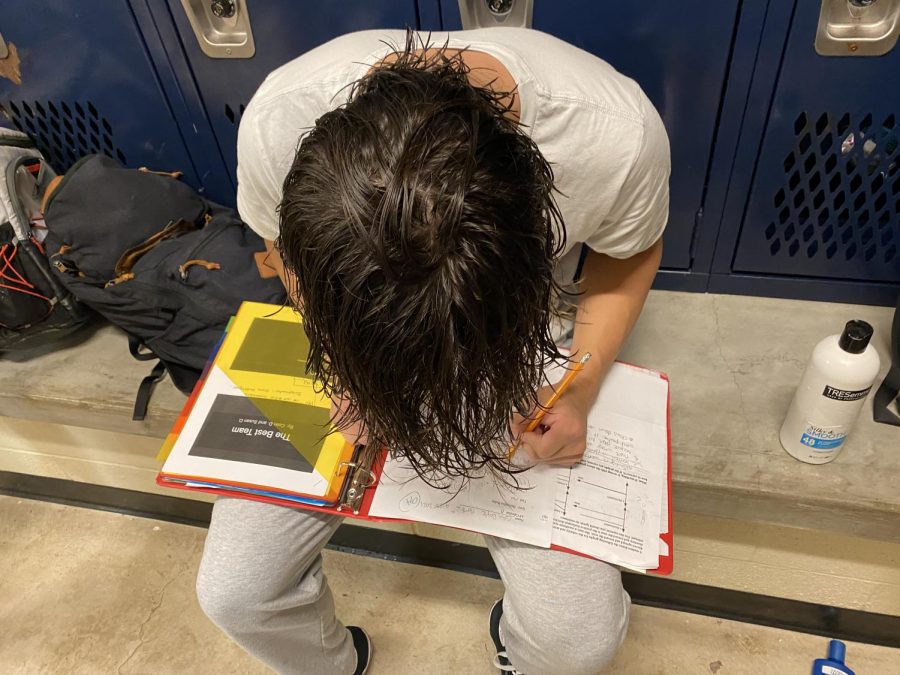The double life
Student athletes bear weight of balancing school and sports
Junior Colin Doyle crams in studying in the locker room after swim practice.
September 30, 2021
For many students, a typical school day begins around 9 a.m. and ends at 4:30 p.m.
High school students participating in athletics often get to school before sunrise, and they don’t leave until long after the final dismissal bell.
“I usually get back late, like 7 or 8 o’clock, do all of my homework, stay on top of things at home, and balance football,” said junior Colton Thomasson, who recently committed to Texas A&M University for football. “I think it’s definitely a rough thing to do.”
“Overtraining” syndrome is a common mental health crisis faced by student athletes. It’s caused by heavy training and lack of rest, and can cause fatigue, anxiety and depression.
“It’s not uncommon to see athletes slip,” Thomasson said. “You will be super stressed about a game or come off of a huge practice. “You come home and you sit down and look at the wall and next thing you know it’s three hours later and you haven’t moved a muscle because you are that tired.”
“Being a student athlete makes both aspects of my life harder because both are draining and exhausting, one mentally and the other physically, which often makes the other more difficult to do and have motivation and energy for it,” senior swim captain Mason Klein said.
Though the physical and emotional stress caused by athletics can be challenging, some students actually find that their grades are improved by participating in sports.
“Academically, sports can get in the way at times,” said Kaili Castillo, a junior on the varsity soccer team. “But I’ve always valued that school comes before extracurriculars, which is why both myself and my teammates will hold each other accountable to take that extra step to ensure we’re doing more than what’s expected of us in the classroom.”
According to the Journal of Sports Administration and supervision, participation in high school sports was “positively related with higher grades, higher graduation rates, and higher scores on ACT tests and state assessments for athletes when compared to non-athletes”. Student athletes also showed less inclination towards dropping out early.
“You get to stay active and bond with your team,” said senior Julia Douglas, a cross country runner. “It can help with grades because it’s more pressure, but it takes up a lot of time and injuries can happen.”
However, being a student athlete can also have its negative consequences.
“It affects my grades by giving me less time to do my work in the morning or at night because of practice and games, but you learn to work around that,” sophomore soccer player Jordan Todd said.
Though grueling training sessions can cause time constraints for many student athletes, they get to practice the sport they love and make memories with their teammates.
“I wouldn’t trade anything for the moments I’ve gotten to share with my team,” Castillo said. “The struggles would be the constant early morning practices and conditioning, but at the end of the day, I remind myself that without my team, I wouldn’t be able to push through the hard moments.”


